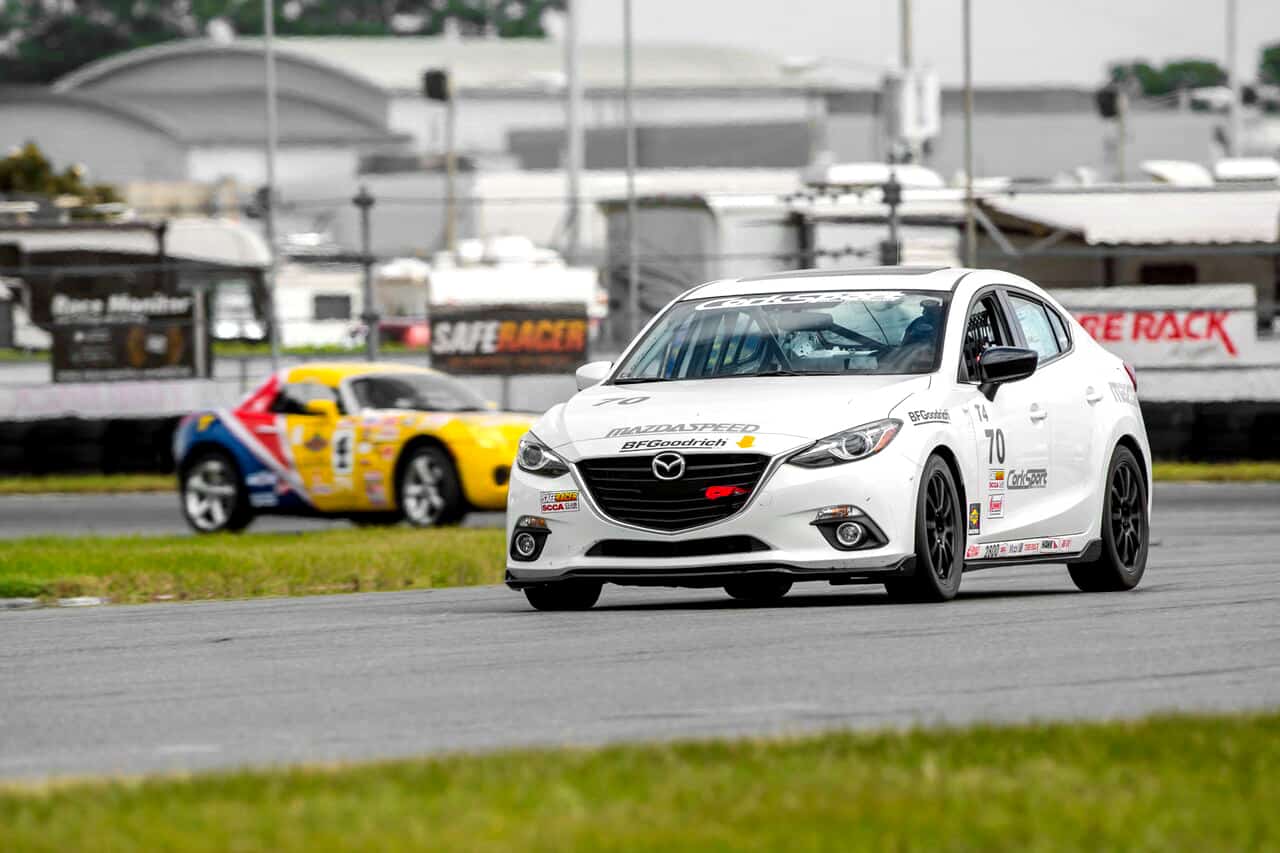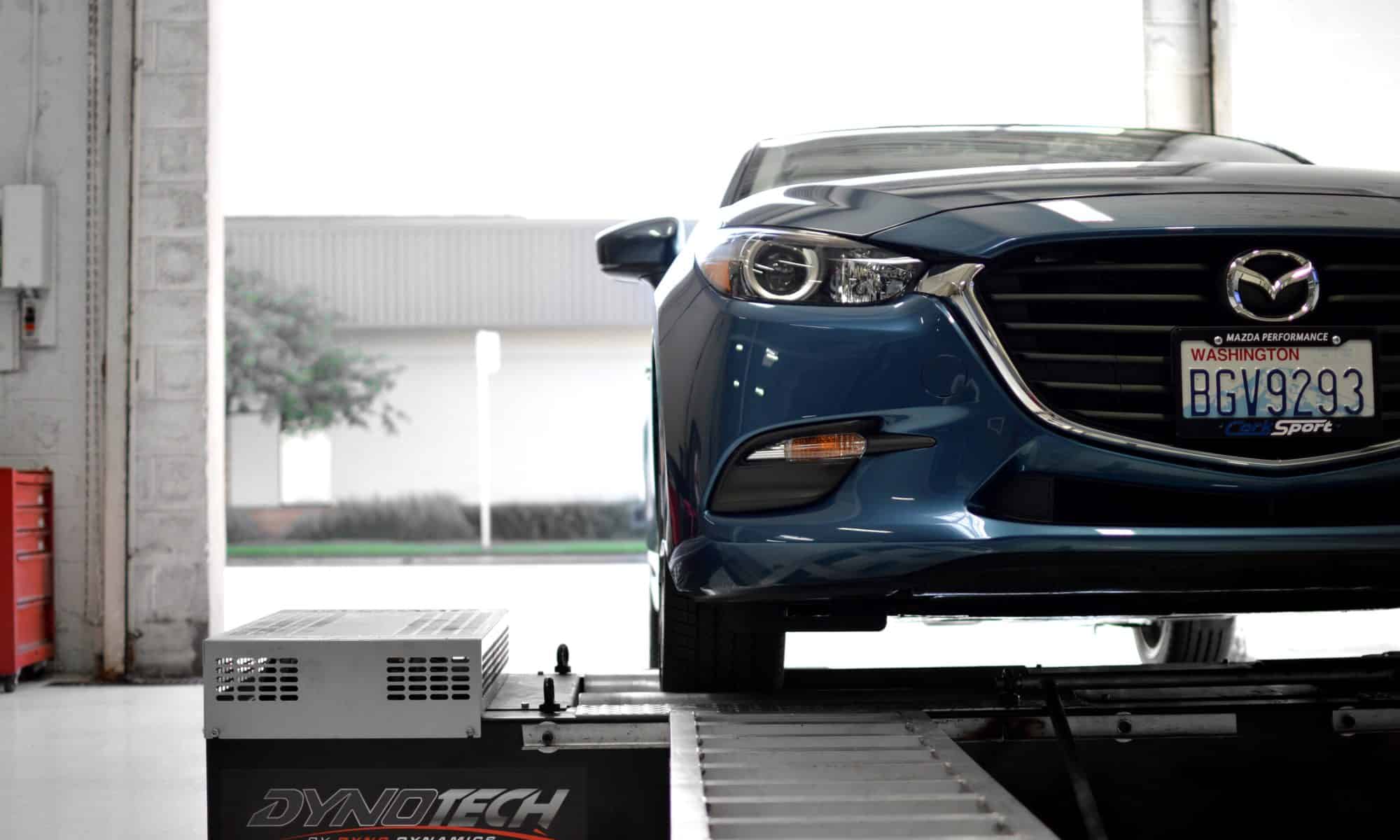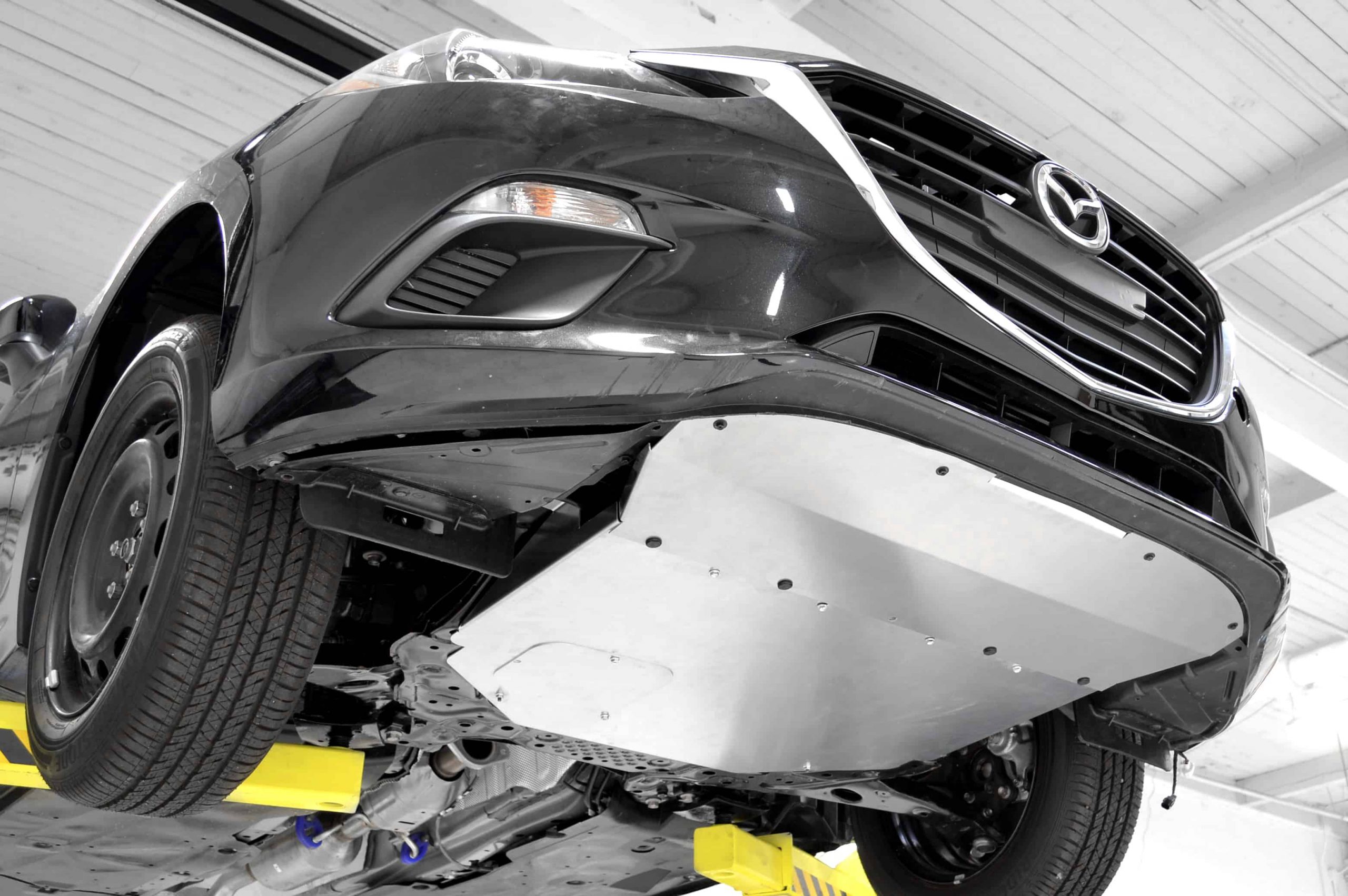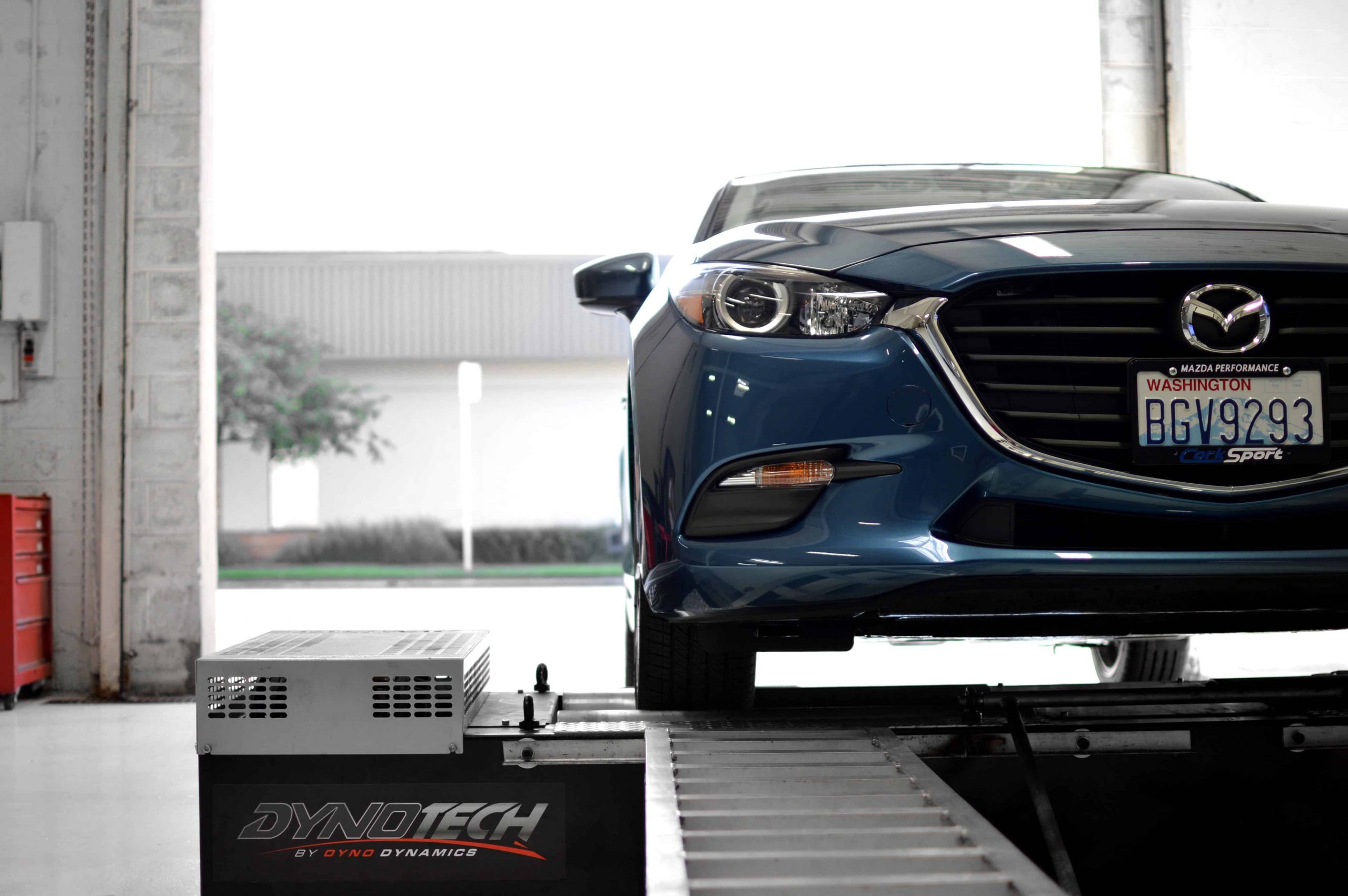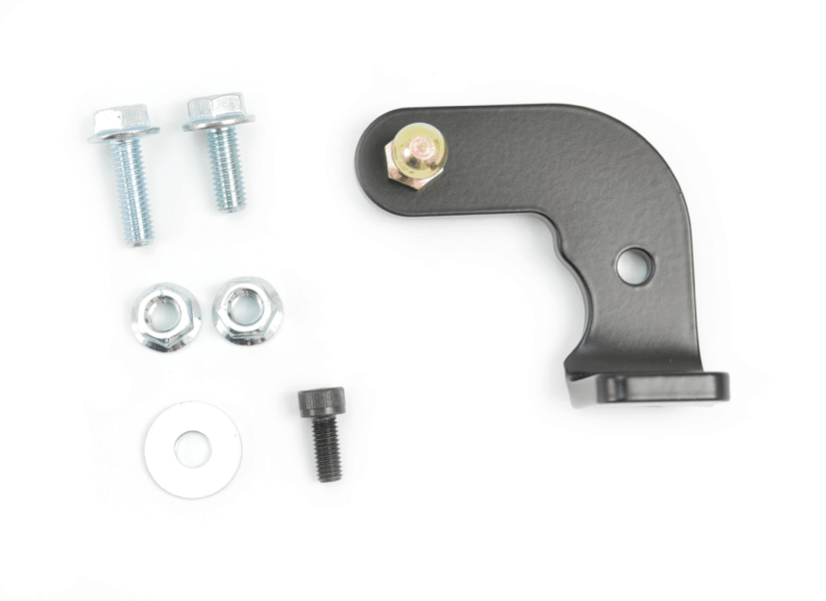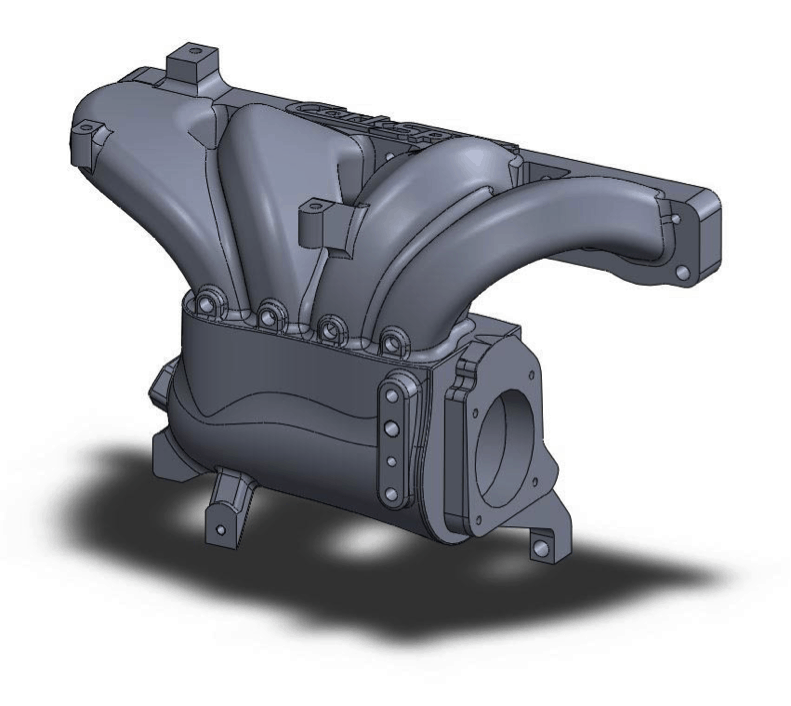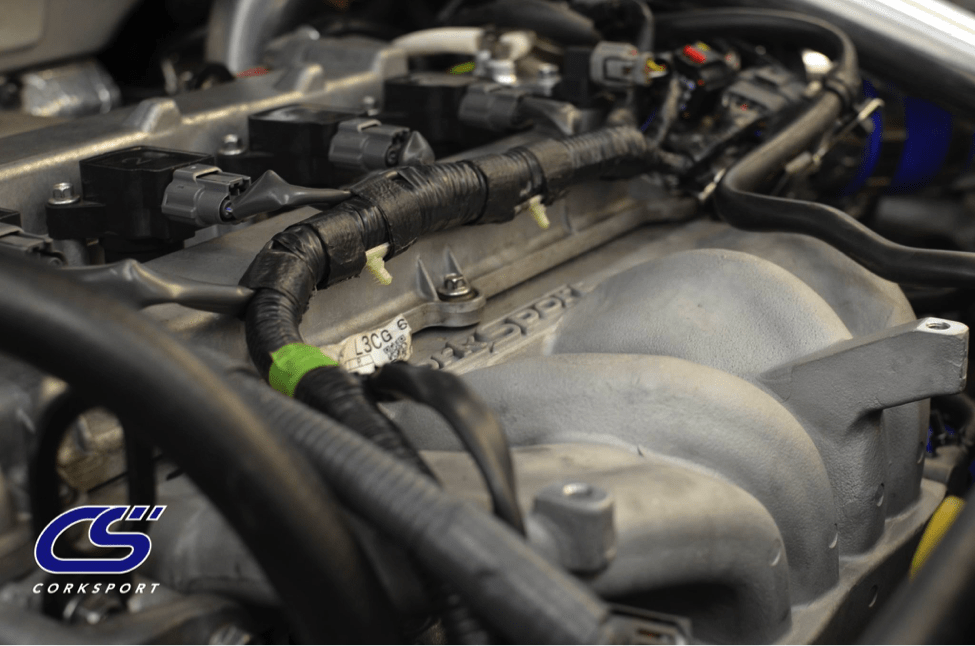Nannies. One thing we have discovered while racing our Mazda 3 is that the OEM safety systems in the newest generation of Mazda 3 work well, too well in fact for racing.
Each year, new safety features are added by Mazda which make the cars safer and reduces the risk of collisions. This is great for day-to-day driving and commuting, but it presents a problem if you plan to take your car to the track to race it.

The OEM system in the car really frowns on lifting a rear tire off the ground, or when you get wheel spin accelerating out of a slow-speed corner. They design the cars against these things happening for safety purposes (understandably). However, Mazda does give you a button on your dash to turn off the traction control. This gets us racers around the limitations to a certain degree.
Let me explain:
When you disengage traction control, the system which measures yaw/pitch and ensures your car has all the wheels on the ground is actually still working, even with the button off. What the button does essentially is give you a sort of leash with more leeway, until the computer thinks you have gone too far of course, then it will kick in traction control again.
So, how do we get past these nanny systems so we can push our cars for maximum performance?
Can you simply unplug the computer which controls the this? I wish it were that simple, but you cannot. The systems in the car are all tied to each other, and the car may not start, it may not run safely, or it may run in a limp mode. A good example of this in our 2015 Mazda3 is: if you unplug the rearview mirror the car won’t start. The ABS is also controlled by the same unit, and this is very handy to have on the track. The ABS is very good in the Mazda3 by the way, so I recommend you keep it.
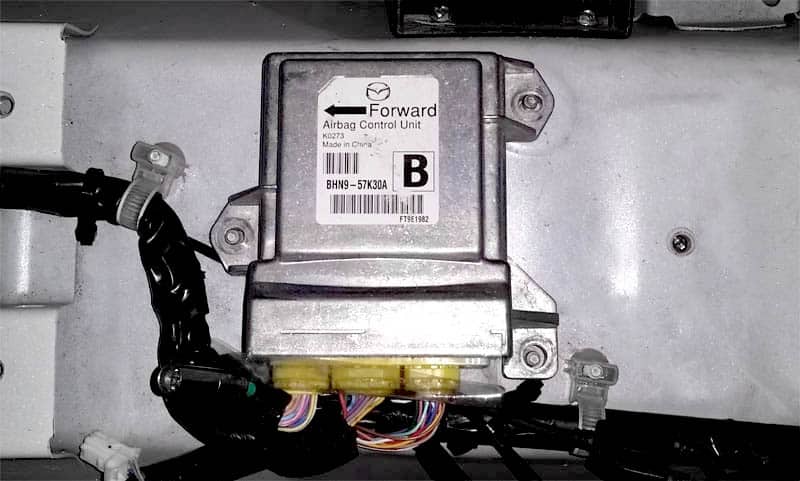
The solution we’ve come up with at CorkSport is pretty simple: Leave the computer plugged in and turn it over.
That’s it, simple, nothing else is required. What happens when you turn the computer upside down is the computer loses its physical reference point, so it defaults by turning off the stability control and nannies, but most-importantly, the ABS still functions.
A big word of caution: The computer which controls the nannies also runs the airbags. If you race your car on the track, the airbags will have been removed from your car already. DO NOT drive your airbag-equipped car with the module flipped over.
The reason this solution works for the track is that our Mazda 3 race car has additional safety equipment installed, with the 6-point harness and halo seat, along with the rest of the driver’s safety gear, that keep you from injury in the event of any wrecks.
FYI: When using this “hack”, your Mazda 3 dashboard will light up like a Christmas tree from all of the warnings; but that is a small price to pay for the improved performance while racing.
–Derrick
DISCLAIMER: This modification is for racing purposes ONLY. Doing so will render many of your car’s safety systems ineffective. Installing other safety systems after this modification is essential.


